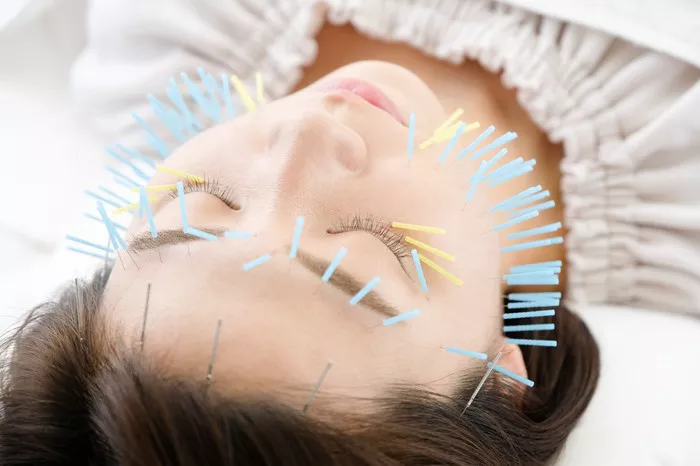Laser scar removal has emerged as a transformative solution for individuals seeking to minimize the visible signs of scars and achieve smoother, more even-toned skin. The efficacy of laser scar removal is influenced by various factors, including the type of scar, individual skin characteristics, and the specific laser technology employed. One key consideration for those embarking on the laser scar removal journey is the treatment frequency – the number of sessions required to achieve optimal results. In this comprehensive exploration, we delve into the intricacies of laser scar removal, shedding light on the factors influencing treatment frequency and providing insights for individuals considering this advanced dermatological intervention.
Understanding the Science of Laser Scar Removal
Laser scar removal operates on the principles of selective photothermolysis, a sophisticated process that involves using laser energy to target specific chromophores in the skin. The choice of laser technology is critical, with different lasers designed to address various aspects of scar appearance, such as color, texture, and collagen remodeling. Common types of lasers employed in scar removal include fractional lasers, pulsed dye lasers, and ablative lasers. Fractional lasers create microscopic treatment zones, promoting collagen synthesis and texture improvement. Pulsed dye lasers target red or pigmented scars, while ablative lasers remove thin layers of skin to encourage new, healthier tissue formation. The precision of laser scar removal allows for targeted treatment tailored to individual scar characteristics.
Types of Scars and Their Impact on Treatment Frequency
The type of scar significantly influences the frequency of laser scar removal treatments. Scars manifest in various forms, including hypertrophic scars, keloids, atrophic scars, and acne scars. Each type presents unique challenges and requires tailored approaches. Hypertrophic and keloid scars, characterized by raised tissue, may necessitate a series of laser treatments to address the excess collagen and promote a flatter appearance. Atrophic scars, resulting from a loss of tissue, may benefit from lasers that stimulate collagen production to improve volume and texture. Acne scars, which can vary in type, may require multiple sessions targeting different aspects of scar appearance. The diversity of scars underscores the importance of a personalized treatment plan aligned with individual needs.
Factors Influencing Treatment Frequency
While scar types play a crucial role in determining treatment frequency, several additional factors contribute to the overall plan for laser scar removal. The age of the scar is a significant consideration, with newer scars often responding more effectively to laser treatments. The individual’s skin type, color, and overall health also influence the choice of laser technology and the number of sessions required. Deeper scars may require more sessions to achieve optimal results, as the laser energy needs to penetrate the skin layers adequately. The desired outcome and the specific laser technology used further refine the treatment approach. A thorough consultation with a qualified dermatologist allows for a comprehensive assessment, considering these factors to develop a tailored treatment plan.
The Role of Collagen Remodeling
Collagen remodeling is a key aspect of laser scar removal, contributing to the gradual transformation of scar tissue. Collagen, the protein responsible for skin structure and firmness, plays a pivotal role in scar appearance. Laser treatments stimulate collagen production and rearrange collagen fibers, leading to improved texture, pliability, and overall scar refinement. The process of collagen remodeling is gradual and may continue for several months after each laser session. Consequently, the frequency of laser scar removal treatments is often spaced apart to allow the skin to heal and undergo progressive changes. Patience becomes a virtue in the journey towards scar improvement, as the benefits of collagen remodeling unfold over time.
Treatment Phases
Laser scar removal is typically organized into distinct treatment phases, with each phase contributing to the overall scar enhancement process. The initial phase involves a thorough consultation and assessment by a qualified dermatologist to determine the type of scar, individual skin characteristics, and the most suitable laser technology. Following this, a customized treatment plan is developed, outlining the number of sessions needed and the interval between sessions. The actual laser sessions constitute the treatment phase, where precise laser energy is applied to the scar tissue. Post-treatment care, including skincare routines and sun protection, forms an integral part of the process. Multiple treatment phases may be necessary to achieve comprehensive scar improvement.
The Variable Nature of Treatment Frequency
The frequency of laser scar removal treatments is variable and depends on individual responses to the laser therapy. While some individuals may see noticeable improvement after a few sessions, others may require additional treatments to achieve their desired outcomes. Factors such as skin sensitivity, scar characteristics, and the chosen laser technology influence the pace at which results become apparent. Dermatologists often adopt a flexible approach, allowing for adjustments in treatment frequency based on how the skin responds to laser therapy. This personalized and adaptive strategy ensures that the laser scar removal process aligns with the unique needs and progress of each individual.
Addressing Scar Coloration
Pigmented scars, characterized by discoloration or redness, are a common concern addressed through laser scar removal. Pulsed dye lasers, in particular, excel in targeting hemoglobin, the red pigment in blood vessels, and melanin, the pigment responsible for skin color. The choice of pulsed dye lasers allows for the selective removal of redness or pigmentation, contributing to a more even skin tone. The treatment frequency for pigmented scars may vary based on the intensity of the discoloration and individual skin responses. Multiple sessions spaced over weeks or months may be recommended to achieve optimal results and address pigmentation concerns effectively.
Optimizing Textural Improvements
Fractional lasers play a pivotal role in addressing textural irregularities associated with scars. These lasers create microscopic treatment zones, leaving surrounding tissue untouched. The controlled injury stimulates collagen production and promotes the remodeling of scar tissue. The treatment frequency for fractional lasers depends on the depth and extent of textural concerns, with multiple sessions often recommended for a gradual and consistent improvement. The interval between fractional laser sessions allows the skin to heal and regenerate, contributing to the overall refinement of scar texture. Fractional lasers offer a versatile solution for a range of scar types, making them a valuable tool in the laser scar removal arsenal.
Combination Therapies
In some cases, dermatologists may recommend combining laser scar removal with other complementary therapies to enhance overall scar improvement synergistically. Combining laser treatments with microneedling, for instance, can amplify collagen stimulation and further refine scar texture. Chemical peels may be integrated to address superficial discoloration and promote skin rejuvenation. The decision to pursue combination therapies is made based on individual scar characteristics, treatment goals, and the expertise of the healthcare professional. This comprehensive approach allows for a multifaceted strategy that maximizes the benefits of scar improvement.
Patient Compliance
The success of laser scar removal is not solely dependent on the frequency of treatments and the chosen laser technology; patient compliance plays a crucial role. Following the recommended post-treatment care, adhering to skincare routines, and diligently practicing sun protection contribute to the overall success of scar improvement. Dermatologists provide specific guidelines for each patient, emphasizing the importance of these aspects in optimizing results. Open communication between the patient and healthcare provider ensures that any concerns or questions are addressed promptly, fostering a collaborative approach to scar enhancement.
Post-Treatment Care
Post-treatment care is an integral component of the laser scar removal process, contributing to the long-term success of scar improvement. Following each laser session, individuals are often advised to keep the treated area clean, apply prescribed ointments or creams, and avoid sun exposure. Sun protection is particularly emphasized, as exposure to UV radiation can compromise the results of laser scar removal and increase the risk of pigmentation issues. Adhering to post-treatment care guidelines supports the healing process, minimizes the risk of complications, and nurtures the skin towards optimal results.
Professional Guidance
Embarking on the laser scar removal journey requires informed decision-making, and professional guidance is the key to navigating this path successfully. Consulting with a qualified dermatologist ensures a thorough assessment of individual scar characteristics, skin type, and treatment goals. A detailed discussion about the expected outcomes, potential risks, and the number of sessions needed provides individuals with a clear understanding of what to anticipate throughout the laser scar removal process. Professional guidance also allows for adjustments in the treatment plan based on individual responses, fostering a collaborative and personalized approach to scar enhancement.
Conclusion
In conclusion, the journey of laser scar removal unfolds as a nuanced and transformative process, guided by the principles of precision, collagen remodeling, and personalized care. The frequency of laser scar removal treatments is a dynamic aspect influenced by scar types, individual responses, and treatment goals. As individuals seek to transform the visible signs of scars into smoother, more refined skin, the role of laser technology stands as a beacon of advanced dermatological solutions. Through comprehensive consultation, strategic treatment planning, and patient-centered care, laser scar removal paves the way for scar transformation, empowering individuals on their quest for enhanced skin confidence and well-being.
[inline_related_posts title=”You Might Be Interested In” title_align=”left” style=”list” number=”6″ align=”none” ids=”3815,3812,3785″ by=”categories” orderby=”rand” order=”DESC” hide_thumb=”no” thumb_right=”no” views=”no” date=”yes” grid_columns=”2″ post_type=”” tax=””]































